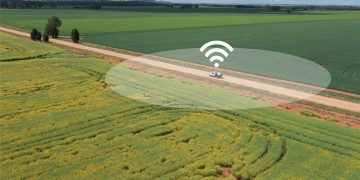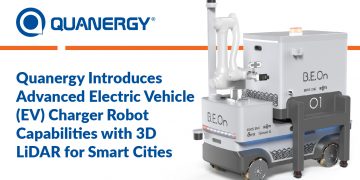Sensors are usually thought of in terms of physical devices that receive and respond to electromagnetic signals – from everyday sensors in our smartphones and connected home appliances to more advanced sensors in buildings, cars, airplanes and spacecraft.
No physical sensor or aggregation of electronic sensors, however, can continuously and globally detect disturbances that take place on or above the earth’s surface. But the physical atmosphere itself may offer such a sensing capability, if it can be understood and tapped into.
To that end, DARPA recently announced its Atmosphere as a Sensor (AtmoSense) program, whose goal is to understand the fundamentals of energy propagation from the ground to the ionosphere to determine if the atmosphere can be used as a sensor. A Proposers Day is scheduled for February 14, 2020, in Arlington, Virginia.
It’s well known that energy propagates from the Earth’s surface to the ionosphere, but the specifics of how that happens is not currently known enough to use the atmosphere as a sensor. Scientific literature has clearly documented that events like thunderstorms, tornadoes, volcanos, and tsunamis make big “three-dimensional wakes” that propagate to the upper reaches of the ionosphere and leave a mark there.
Since that energy traverses several other layers of atmosphere – the troposphere, stratosphere, and mesosphere – on its way up to the ionosphere, the idea is to try and identify the disturbances the “wake” is making along its way to see if researchers can capture information to indicate what type of event caused it.
“Maybe I don’t have to directly observe events like an earthquake or tsunami,” said Air Force Major C. David Lewis who is the AtmoSense program manager in DARPA’s Defense Sciences Office.
“Perhaps I can learn what occurred from information in the atmosphere. I want to find out how much information is available, and if I can disaggregate the signal I’m interested in from other natural phenomena creating noise in the background.”

“We typically model, simulate, and measure properties in the troposphere, which is where terrestrial weather happens,” Lewis said.
“But we don’t really make those measurements in the stratosphere or the mesosphere, or the bottom part of the ionosphere, because no one has really been keenly interested in it and it’s hard to get up there. Sometimes the mesosphere is even called the ‘ignorosphere,’ but we know that information traverses it, so we’re really looking for scientists and engineers with unique ways of potentially measuring different aspects of the atmosphere.”
Another key area for the program is measuring and understanding background noise that weakens or destroys signals of interest.
“When we think about the possible background entropy, there are jet streams, compression of the fluid, shear forces, Coriolis forces, etc.; all those things trigger some sort of turbulence that destroys information,” Lewis said.
“When it comes to geophysical and meteorological sources of atmospheric disturbance there’s a frequency spectrum emitted from infrasound all the way up to the ultrasound. Some of those frequencies are more immune to atmospheric entropy than others, and those are what we’d like to capture.”
The program calls for two phases. The first phase is concept development (27 months), and the second phase is proof of principle field testing (12 months). If successful, AtmoSense could enable new ways in the future to identify and give insight into events such as earthquakes, tsunamis, storms, tornados, and asteroid activity.

for developers and enthusiasts







